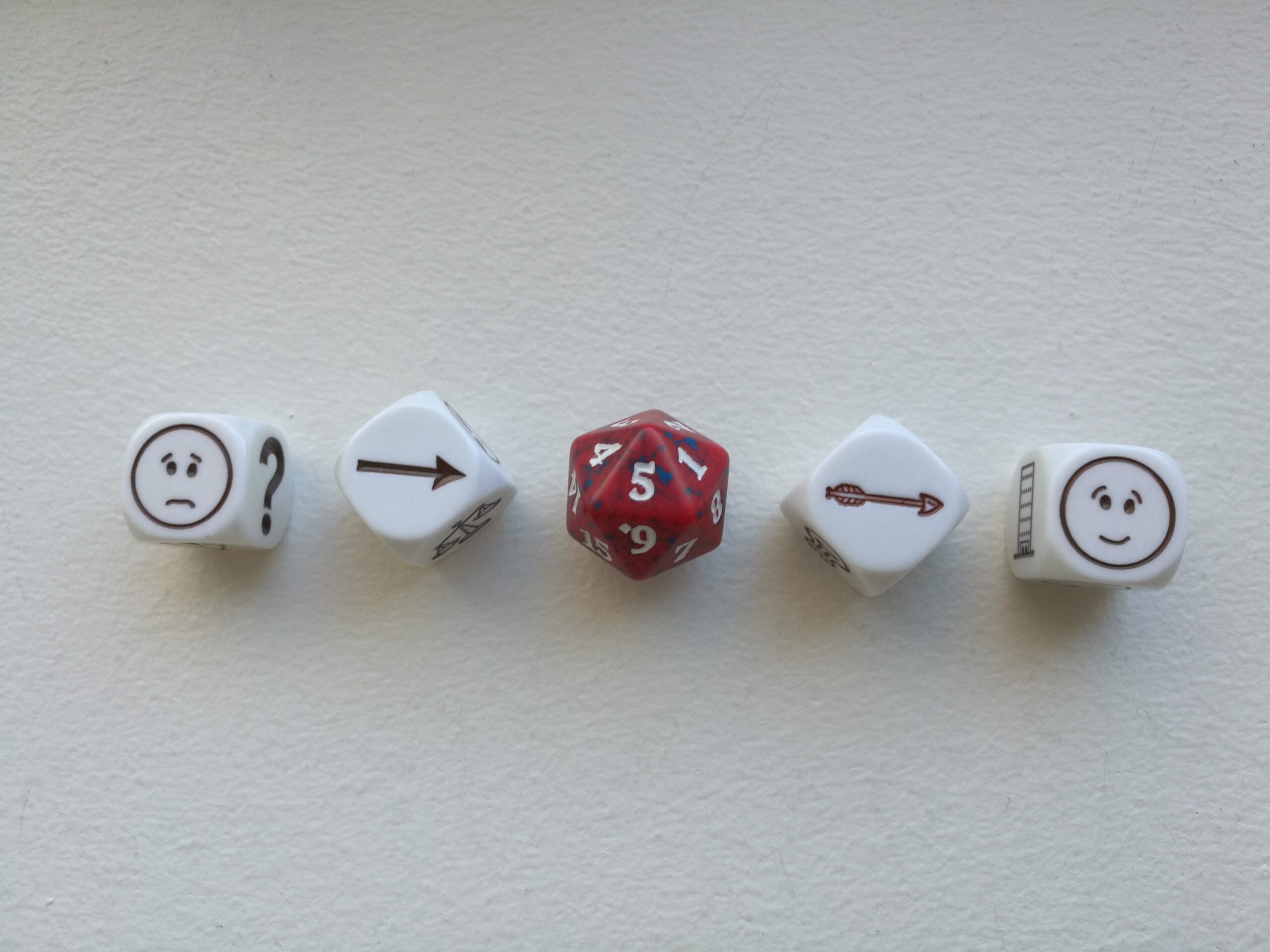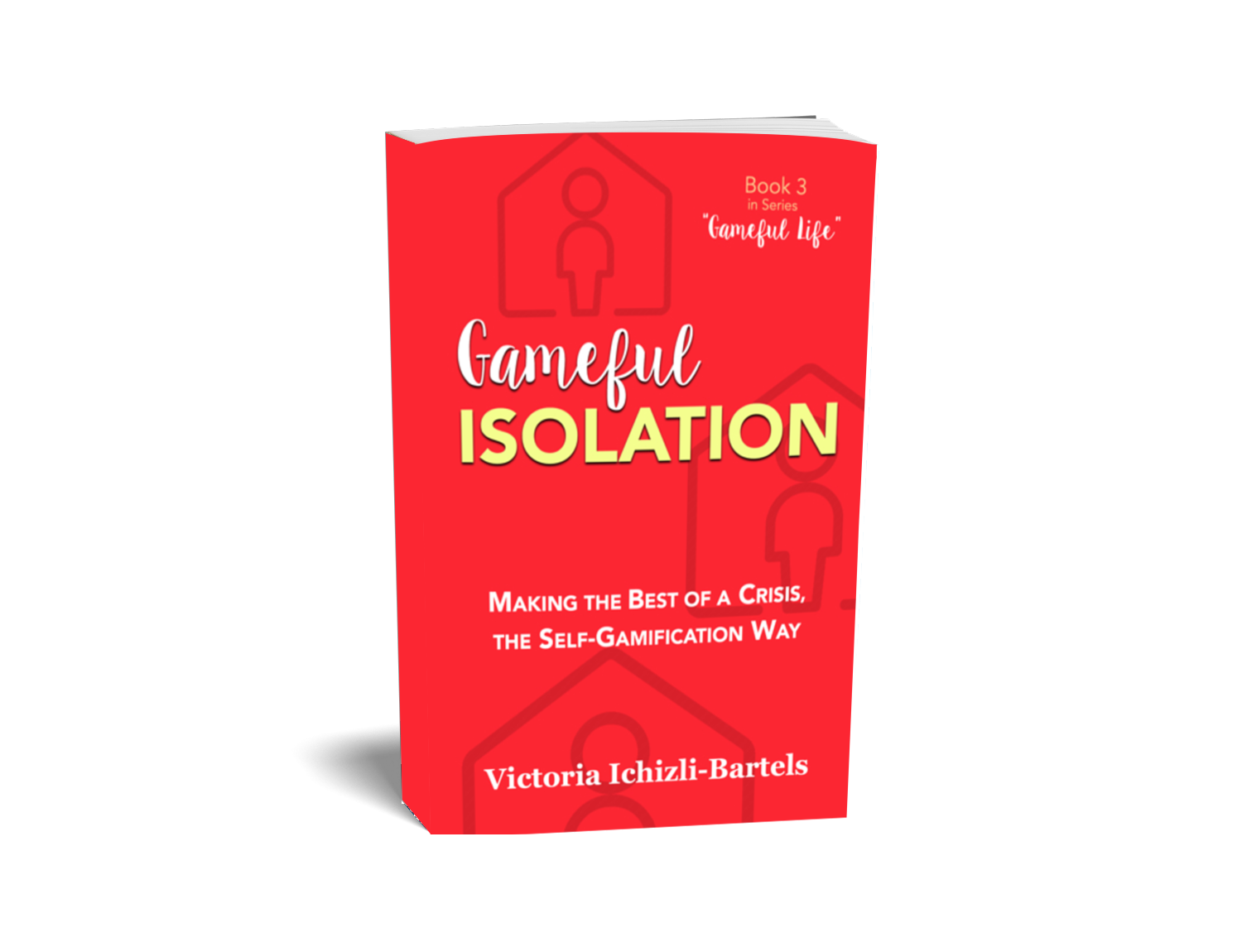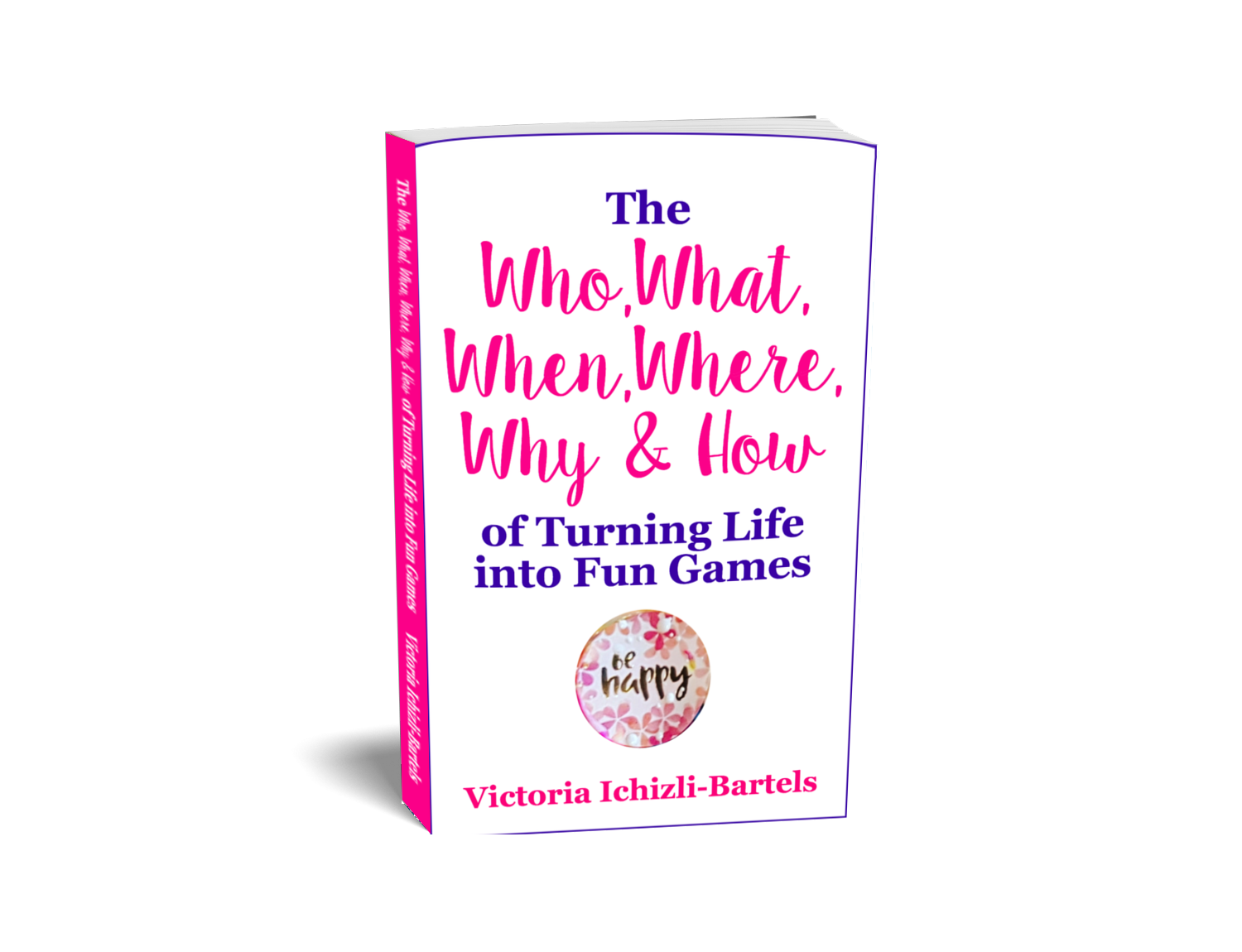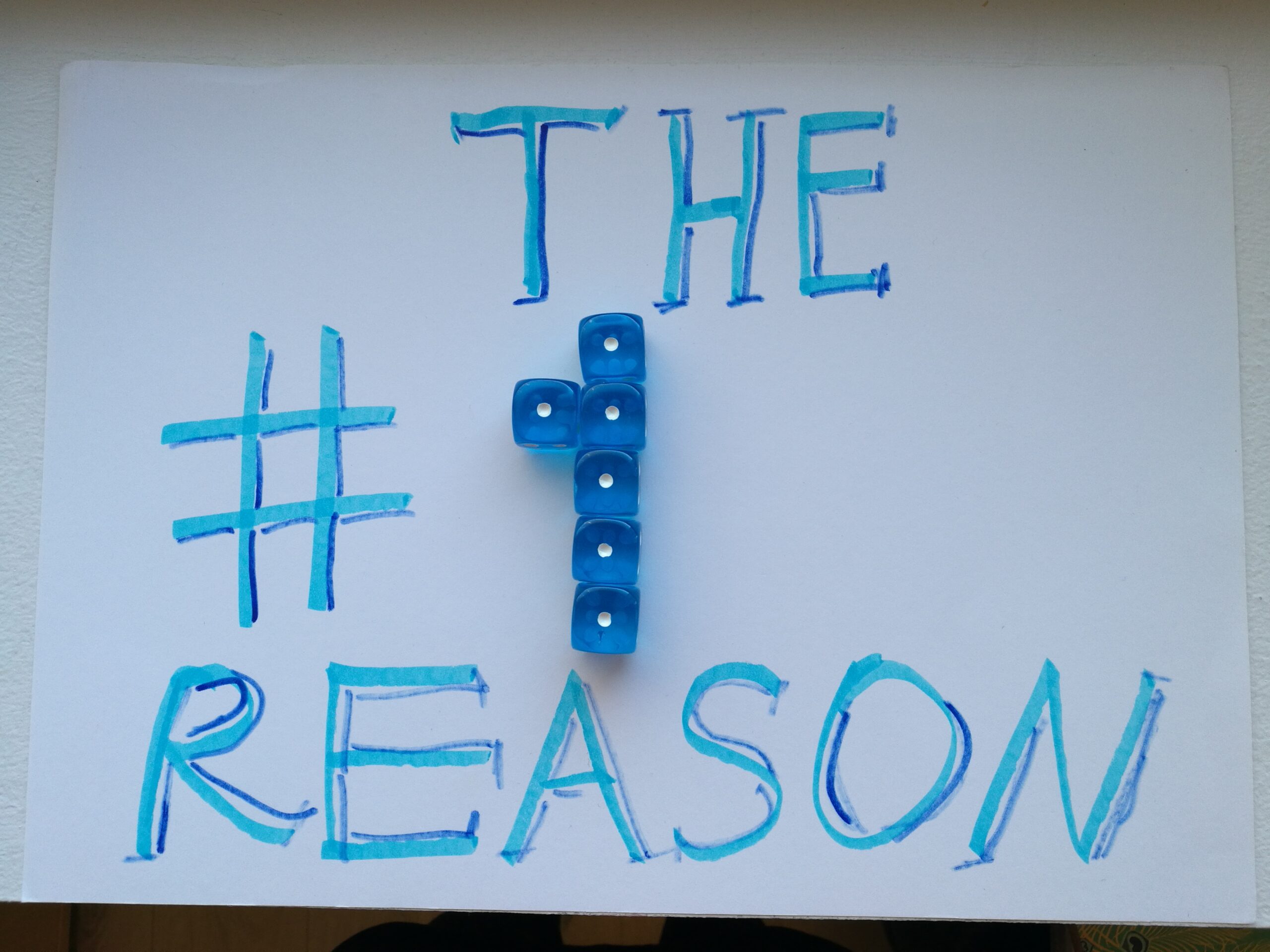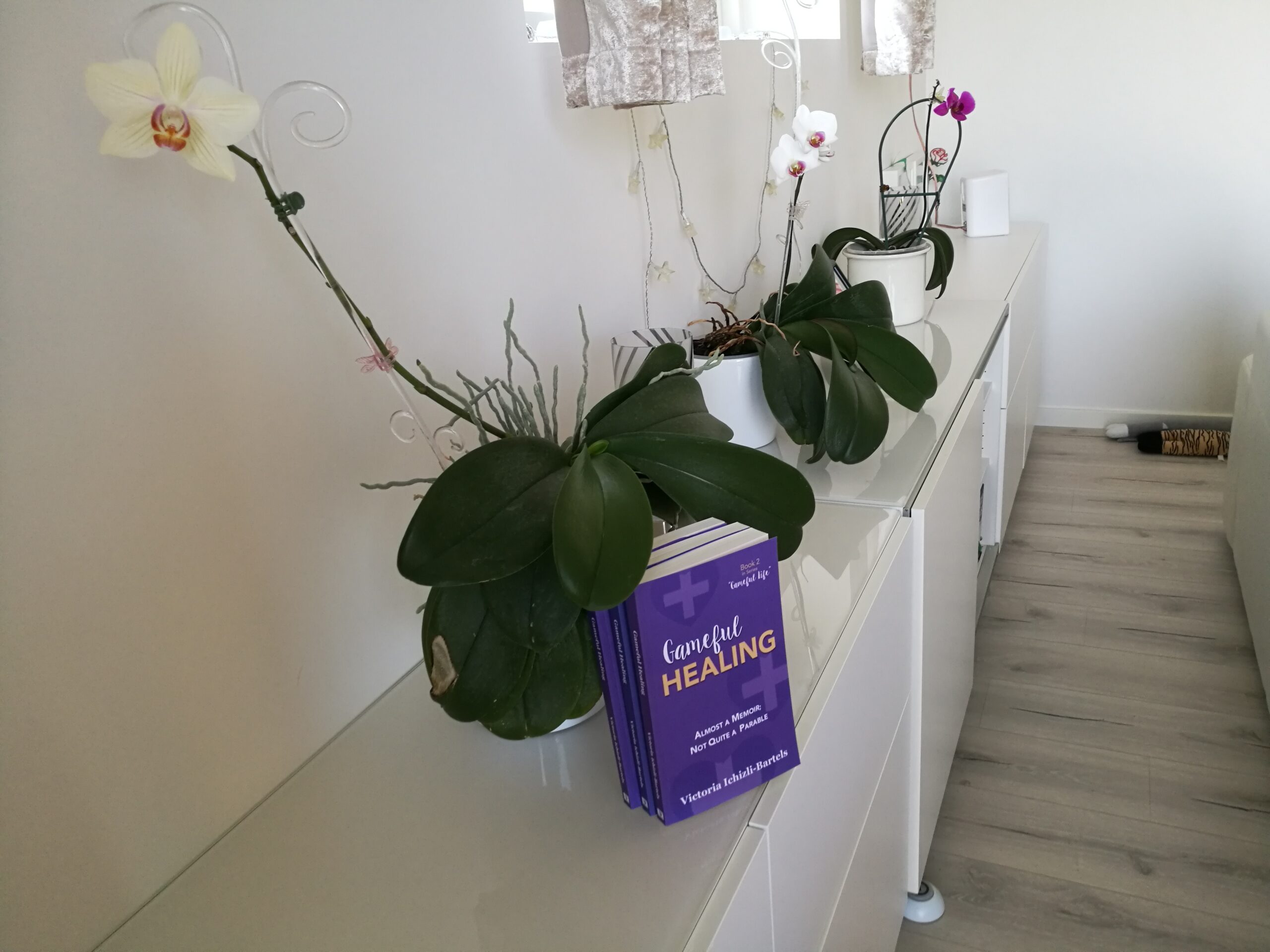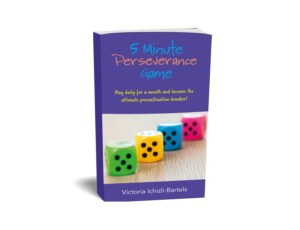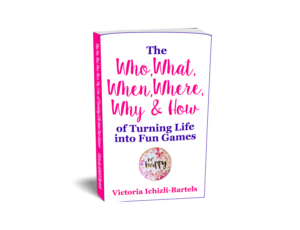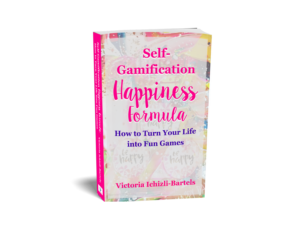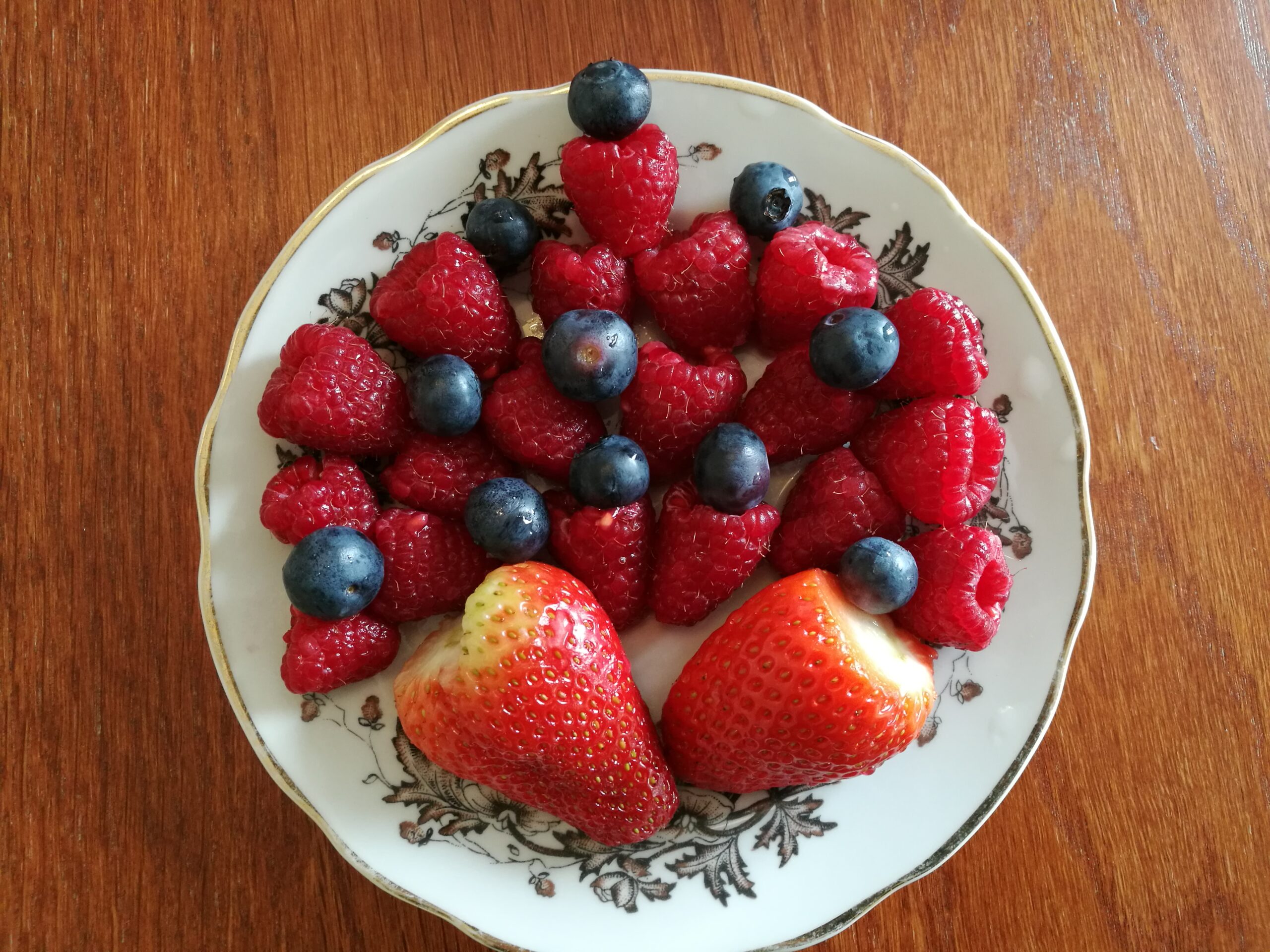Here is another excerpt from my latest book The Who, What, When, Where, Why & How of Turning Life into Fun Games, which is a short and reworked version of the Self-Gamification Happiness Formula. It addresses the place where the self-gamification, in other words, turning our projects, activities, and also our lives, into fun games, occurs.
1. Where should you turn things into games?
Is there a space where the turning of something into games is most appropriate or works best?
Yes. In fact, there is only one possible space for it to happen. Here goes.
The only place to turn anything into a fun game is where you are. I.e., when we are working or doing anything else, we are playing that project or activity game. And the game takes place where the player is. It is where each of us is.
This also means that turning the work of others in a project into a game can only be done where they are, and by them. You can’t do it for them.
So don’t judge others; they are their perfect designers and players too.
Sometimes, when we have success in our life, we might be tempted to judge others who complain about theirs. But remember that you can’t design their games, because your “shoes” won’t necessarily fit them. Only they can develop their own Self-Motivational Games, and create their own experiences.
And also remember that when you judge others, you are complaining too. (I had to chuckle when I observed myself complaining about other people’s as well as my own complaints, for the first time.) And when you are complaining, you aren’t playing your games. So instead of analyzing what others do or don’t do while turning (or not turning) their projects and lives into games, concentrate on playing your games and having fun with them. This is the best way to share Self-Gamification.
2. Where is the starting point?
While working on Self-Gamification Happiness Formula, I found the following brilliant quote:
“Every moment is a fresh new beginning, a wonderful inauguration of the great cosmic journey through the universe. We can do whatever we want. We can change reality at any moment.” — Russell Brand
We might not perceive many of the moments in our lives as such fantastic beginnings, and discard them as not good enough, but they still make up part of our lives. Let’s consider examples of chains made out of moments related to what we are up to, and how our paths turn out.
If we map the initial state of our lists and thought processes, then the path might look like this:
Us —> Our to-do list item —> Our goal or dream
Being aware of the magic of a small, effortless step (see the later chapter, “How?”), we recognize that the following path is more pleasant and more doable:
Us —> The smallest effortless step —> … —> Our to-do list item —> … —> Our goal or dream
Where “…” corresponds to the other smallest, most effortless steps.
I am a passionate writer. So for me, it is straightforward to illustrate these diagrams with what I do almost every day. Thus for a writer, the previous chart will look as follows:
The writer (at her computer) —> Write a paragraph —> … —> Write a book —> … —> Become a published author
But here a question arises: will the next step for a writer always be to write a paragraph, when the starting point might be something else, like taking a shower? Many writers have brilliant ideas while taking a shower. So what is the choice? Despair?
No, rather a recognition that the next step is something else that will also contribute to your goal. So if you take a shower, then the next step would be to finish the shower.
The end of the shower will be your new starting point. There you have the option of either continuing your morning routine or taking a small detour to your desk to make notes on your brilliant idea.
You could also play a Role-Playing Game [1] with yourself and ask yourself, as you would a best friend, to remind you later about this brilliant idea. But assure yourself as you would your best friend, that it won’t be a problem if he or she (that is yourself) forgets it.
Yes, I again suggest that you be aware, progress in small steps and treat whatever you do as a game.
But here is another diagram that is trickier than having the shower as the starting point:
You (upset, wherever you are) —> (The next step; not identified yet) —> … —> Your to-do list item —> … —> Your goal or dream
When we are upset, then the to-do list items and even the smallest steps might seem further away than they do in other moments.
But what does being upset mean, anyway? Oxford Dictionaries say that we are upset [2] when we are “unhappy, disappointed, or worried.”
What could be the reasons for those feelings? Or is there perhaps one source for them? Here is what Dr. Robert Maurer [3], Director of Behavioral Sciences for the Family Practice Residency Program at Santa Monica, UCLA Medical Center and a faculty member at the UCLA School of Medicine, says on that:
“Do all upsets come from fear? We don’t know for sure. However, based on the research, I suggest that this is the most useful way of looking at them.” — Robert Maurer, Mastering Fear
It’s a great hint to look at our fears when we’re upset. However it is a scary task in itself. What to do then?
Here is what Ariel and Shya Kane say about it:
“It is often challenging to look at how you think and act because it might be embarrassing to see the real truth. But what if you were to take an anthropological approach to how you relate rather than a subjective, judgmental one? If you were a scientist, looking to see how the inner workings of a culture was put together, you would notate what you see — not judge it. If you bring an active interest, an observational approach to how you have been programmed, then you can ‘debug’ your own personal computer.
“Think of yourself as a highly sophisticated computer with archaic programming. Simple awareness acts like a complimentary upgrade.” — Ariel and Shya Kane, How to Have A Match Made in Heaven
Yes, non-judgmental seeing allows us to become both honest and kind with ourselves.
The path we take while making progress can be immensely intriguing, and if we drop our judgments and expectations, we can discover many surprises along the way.
Let me remind you here of the gift that anthropology, kaizen, and gamification bring together. Being upset is not wrong.
Upset and other “’stress symptoms’ … are not signs of disease. They are our body’s gift to us to let us know something important is happening that requires our immediate attention. Without these symptoms we would have perished as a species long ago.” — Robert Maurer, Mastering Fear
We often fail to appreciate these gifts because they don’t fit our preferences for the moments in our lives. It is up to us to decide which moments we extend and which we keep short. Let’s remember that each moment is a starting point.
So the next two steps, when your starting point is an upset, could be:
You (Upset) —> Stop —> Take a non-judgmental look at where you are and your fears —> …
In the next moment after you’ve had a good look at where you are and the fears you are resisting, will be whatever you choose to do next in your game.
3. What if the next step leads us somewhere we didn’t plan to go?
Here is another analogy to reflect the fear we might have of the next step, however small it might be. When you stop and look, you might have the feeling that you are at a crossroads. It is great to have a choice, but what happens if we take the “wrong” road, leading us away from where we were actually heading?
Even if we break down the path to our goals into the smallest of steps, we might shy away from those small steps and do something else entirely.
Or life might get in the way and require us to do something else.
Is that bad?
No, because you have the possibility to get back to where you were heading. Awareness can help you see that each moment is a crossroads. As soon as you detect a stop, take a look and choose the next step.
Sometimes detouring can help you make the best turn on your way to your goals.
Here is what happened as I was working on finalizing this part of the book in Self-Gamification Happiness Formula:
I had a doctor’s appointment for both of my children, who had experienced cough and asthma symptoms for quite a while. We went to test them for allergies, among other checks. The prick test revealed that my son was allergic to house dust mites. That called for action. So instead of continuing work on this book for the whole afternoon, as I had originally planned, I spent the time cleaning my son’s room meticulously by washing his bed linen, reducing the number of plentiful dust catchers (such as many tens of comic magazines), hunting around the house for plastic boxes that could close hermetically, and putting most of his toys in these boxes. Later I learned that all the dust catchers were not the reason for his allergy, but I am still glad I did all that. Whatever it was that ultimately helped with his dust-mite-allergy and asthma, my son hardly coughs these days. And that is what matters.
Awareness and saying “Yes” to what was requested, along with the experience of playfulness when turning my life into games, and kaizen, helped me to make progress and appreciate each of the small things I cleaned. I noticed how much better the air in my son’s room became when I removed old play carpets. All that brought a feeling of satisfaction that overpowered my sense of guilt for not having done it sooner.
I did write a little in these chapters, but only during two ten-minute breaks. These breaks felt like both a reward and progress.
But what surprised me most was what happened the next day, as I was taking my morning shower. I realized how I wanted to structure this part of the book in Self-Gamification Happiness Formula. Before that, I had various topics mixed up and hadn’t felt entirely comfortable with it, despite being unable to put my finger on exactly what it was that bothered me.
So the break I took from writing, also in my thoughts, whilst being preoccupied with the ambition to make my son’s room as safe for him to sleep in as possible, helped me achieve the state of mind needed to find the best solution for this part of the book.
Hence, the seeming “curse” of an easy or necessary step that can lead us away from our goals, can actually become the blessing that leads us more quickly or more directly, to what we want, and beyond.
Thus even your escape-to tasks can become the necessary step toward your goals. I continually discover great quotes and thoughts that I add to various chapters of this book (Self-Gamification Happiness Formula) while reading the multiple books I enjoy both for leisure and to learn something new. And even when I surf social media at random.
Being an interested and curious scientist is the most brilliant state of mind. The multi-dimensionality of our behavior and thought processes never ceases to amaze me. It’s so much fun to look at them non-judgmentally and become aware of the possibilities we have if we stop fighting and fleeing.
After recognizing where we are, where we want to head, whether we are escaping something toward that goal, what that is, and what activities we escape to, without judging all that, we can identify and take the next step that will move us toward our goals.
Awareness and kaizen will help us see that the next step toward our goals and dream is not far away, but exactly where we are right now.
And that in most cases, there is nothing else we need to make that step, than what we already have.
To get your copy on Amazon,
click on the picture below
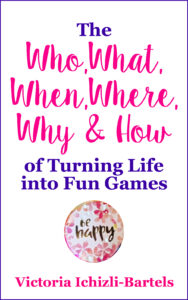
For other retailers, go to the book’s page
on this site here.
Definitions and References:
[1] Role-Playing Game: “A role-playing game (sometimes spelled roleplaying game; abbreviated RPG) is a game in which players assume the roles of characters in a fictional setting. Players take responsibility for acting out these roles within a narrative, either through literal acting, or through a process of structured decision-making regarding character development. Actions taken within many games succeed or fail according to a formal system of rules and guidelines.” — en.wikipedia.org/wiki/Role-playing_game
[2] https://en.oxforddictionaries.com/definition/upset
[3] http://www.scienceofexcellence.com/
